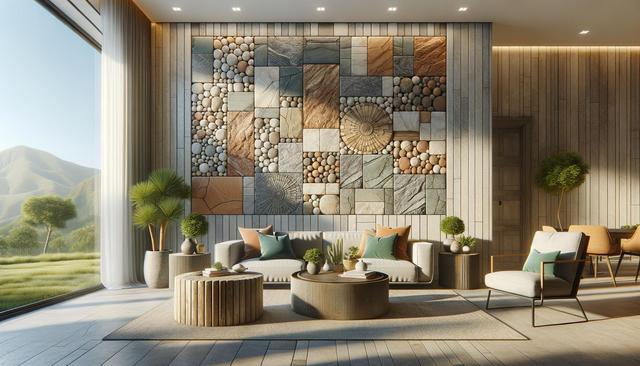Why Choose Faux Stone for Decorative Surfaces?
Faux stone panels have become a popular choice for homeowners and designers seeking a balance between aesthetic appeal and practical benefits. Unlike natural stone, these panels are manufactured from lightweight materials such as polyurethane or high-density polymer, making them easier to handle and install. This accessibility allows for a wide range of applications on decorative surfaces without requiring the structural reinforcement that real stone often demands. Their realistic textures and varied color options provide the look of natural stone at a fraction of the cost and weight.
Some of the key advantages of faux stone panels include:
- Lightweight and easy to install
- Cost-effective compared to natural stone
- Durable and weather resistant
- Available in a wide range of styles and finishes
- Low maintenance requirements
These qualities make faux stone panels an ideal choice for both residential and commercial decorative projects, offering flexibility and visual impact without the complexities of traditional masonry.
Enhancing Interior Accent Walls
One of the most common uses of faux stone panels is in creating interior accent walls. These panels can transform a plain wall into a focal point that adds depth and character to any room. Whether used in living rooms, bedrooms, entryways, or even kitchens, faux stone brings a touch of rustic charm or modern elegance depending on the style selected.
Popular interior applications include:
- Fireplace surrounds
- TV feature walls
- Hallway or staircase accents
- Bathroom walls (with moisture-resistant materials)
Thanks to their lightweight design, faux stone panels can be installed directly over drywall or existing surfaces without needing specialized tools. Many products are designed with interlocking edges, ensuring seamless joints and a professional finish. This DIY-friendly nature makes them a practical option for weekend renovation projects or larger home makeovers.
Outdoor Features Made Simple and Stylish
Faux stone panels are equally at home outdoors, where they can be used to elevate the appearance of exterior walls, garden features, or patio areas. Their weather-resistant construction means they can withstand sun, rain, and temperature fluctuations without fading or cracking. This durability ensures long-lasting curb appeal with minimal upkeep.
Common outdoor uses include:
- Exterior facades and siding
- Outdoor kitchens or grill stations
- Garden walls and planters
- Columns and porch bases
Because they mimic the look of natural stone so effectively, faux stone panels can blend seamlessly with other architectural elements. They are especially useful for updating older homes or enhancing new construction projects with timeless texture and warmth.
Installation and Maintenance Considerations
One of the standout benefits of faux stone panels is their straightforward installation process. Most panels come with pre-formed edges and fastening systems that allow for quick and secure attachment using basic tools. With careful planning and surface preparation, even novice DIYers can achieve professional-looking results.
Installation tips include:
- Carefully measure and plan the layout to minimize waste
- Use adhesive and screws for a firm hold
- Seal joints where necessary for weather resistance
- Follow manufacturer guidelines for specific panel types
Maintenance is minimal, often limited to occasional cleaning with a soft brush or cloth. Unlike natural stone, faux panels do not require sealing or special cleaning agents, making them a low-effort design solution that retains its appeal year after year.
Design Versatility and Aesthetic Options
Faux stone panels come in a wide array of designs, textures, and colors to complement different architectural styles and personal preferences. Whether you’re aiming for a rustic farmhouse look, a sleek modern finish, or a traditional aesthetic, there’s likely a panel design that suits your vision. This versatility makes them a go-to choice for both homeowners and interior designers alike.
Some popular design styles include:
- Stacked stone for a modern, linear appearance
- Fieldstone for a rugged, natural look
- Ledgestone for a refined, textured finish
- River rock for a softer, rounded profile
By mixing and matching panel styles or pairing them with complementary materials like wood or metal, users can achieve unique and personalized results. This adaptability allows faux stone to function as more than just a visual enhancement—it becomes a key element in crafting the overall design experience.
Conclusion: A Practical and Stylish Choice
For those looking to upgrade interior or exterior spaces with texture and character, faux stone panels present a compelling option. They combine the visual appeal of natural stone with user-friendly installation and low maintenance, making them suitable for a wide range of projects. Whether enhancing a cozy indoor nook or elevating a home’s curb appeal, faux stone panels deliver reliable performance and lasting style. Their adaptability and affordability ensure they remain a favored choice for both homeowners and professionals seeking functional beauty in their design solutions.







